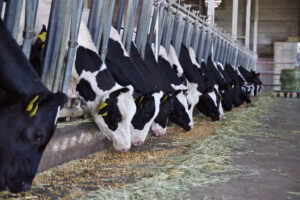Spices are becoming increasingly popular as feed ingredients, and their presence in the various natural solutions on the feed ingredient market is growing. This is due in particular to their numerous beneficial properties and their availability on the market due to their presence in human food.
Hot or pungent spices: not just in the mouth!
In the previous article, we explained the mechanisms related to the sensation of heat obtained when ingesting certain spices such as chilli or pepper. Indeed, this sensation, induced by a sensitive perception – and not gustatory or olfactory – due to the activation of receptors (TRP1V and TRPA1) is assimilated to a sensation of pain by the body. These receptors are present in the mouth but also on the mucous membranes and on the skin. Therefore, any contact with these spices causes an unpleasant reaction for the farmer or operator of the product as well as the animal.
Precautions to take
Although capsaicin is the ‘star’ of the spice market, its use is not without risk. Its ability to transfer to aerosol particles makes it extremely irritating properties for the skin and various mucous membranes. The use of PPE (personal protective equipment) is essential in the factory and laboratory. The same irritant effect can be observed with pepper or ginger at lower levels of intensity (moreover, the “pepper spray” used during riots is in fact mainly made up of capsaicin (chilli pepper)).
How can they best be used?
Not too much, not too little
The first essential step is to determine an adequate dosage for the animal between benefits and a bearable and non-harmful heat sensation. In addition to this effective dose for the animal, there is the constraint of easy and risk-free handling in the factory. The concentration of the active ingredients and the extraction process must be taken into account.
A rock-solid protection
The protection of the active ingredient is the result of galenic know-how and knowledge of molecular chemistry. This protection first of all makes the product less dangerous and easier to handle. Protection is also useful in relation to the environment to which the active ingredient will be exposed. Finally, protection plays a post-ingestion role. The active is then not inhibited, altered or assimilated in the wrong place and even released in the target organs or cells. This vectorisation therefore appears to be a doubly beneficial solution for humans and animals.
Collective work
Several spices in the long list have synergistic properties: using them together multiplies their benefits. The best known example is the combination of pepper with turmeric: piperine, a molecule close to capsaicin and present in peppers, improves the bioavailability of curcumin by almost 20 times (Shoba et al. 1998)! The joint use of these two spices potentiates the benefits of each (digestive secretions and metabolic regulation for pepper, antioxidant and anti-inflammatory for turmeric).
You have understood it, to keep all the benefits of spices you must not play the sorcerer’s apprentice. You need to contact an animal specialist who knows the best synergies to target desired applications. It is necessary to contact a galenic specialist capable of protecting the active ingredients, which makes it possible to reduce their effective concentration, to reduce the side effects as well as the treatment costs.






